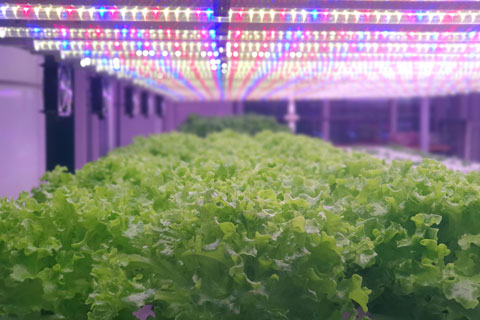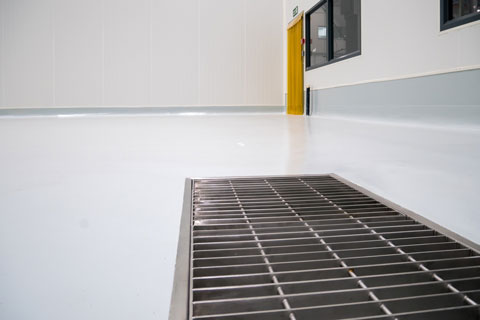11/1/2023
Where Are the Pitfalls?
Erika Summers

When embarking on the venture of starting a commodity-based business, regardless of the sector, there are always proverbial “pitfalls” that can be avoided by simply learning from others who’ve done it before. In the world of vertical farming, a still relatively new industry, identifying and taking the appropriate measures to avoid these pitfalls is a little harder because we’ve seen more failures in the news about this industry than we’ve seen success stories, especially as of late.
Pictured: It’s important to talk to your power company early to have a thorough understanding of your energy situation.
We also see what’s referred to as “silos” or groups and organizations that believe their knowledge is intellectual property and don’t want to share the lessons they’ve learned without an NDA. I don’t claim to know all the answers of how to make a vertical farm successful—I don’t think any single individual can honestly—but I personally dislike the division, so my intent with this article is to share my knowledge of the pitfalls that I’ve both witnessed and heard of in an attempt to add some knowledge to the collective consciousness of this industry.
Initial farm planning
The first and most devastating pitfall that I’ve seen is when a group or team doesn’t do the appropriate amount of market research necessary to make a reliable financial business model. Understanding simple things like who are your key customers, what price points are they willing to buy product at, how will that product be delivered and how frequently, and what packaging will be used on the shelves are all inputs that need to be incorporated into any ROI sheet. Also, initial CAPEX costs for all the necessary equipment, maintenance cost for maintaining the longevity of that equipment and operational expense costs, such as electrical usage for that equipment, need to be considered. As anyone in the agriculture space knows, there are a lot of moving parts when it comes to getting produce to market. In the vertical farming space, that number of moving parts is increased.
When I speak with teams about this, I often get pushback about approaching clients because they say, “Well, we need a facility to grow product to show people to get them interested in buying.” In some cases, yes, having product to show goes a long way in those kinds of negotiations. There are workarounds, though; small units are available that can grow sample products for your sales team to get clients interested. You can also consider building out some sort of smaller-scale facility to establish a brand and test the market. Or you can build or start up your operation in phases, so you aren’t investing millions of dollars in going full scale right away.
Please, understand your market, understand your customers and talk with them ahead of time about what their wants and needs are. Look at how to strategically be within proximity of your customer while also making sure that you’re in a location best suited for your business. I spoke with a friend in the industry recently who was telling me about a farm that paid thousands of dollars more in taxes that they could have easily avoided had they selected a location literally a few miles away outside of a town’s jurisdiction. Farming is simply not a high profit margin commodity; every dollar counts and the devil is in the details. Having a holistic vision of the entire operation in the beginning could be the difference between a farm being a success versus another failure.
Building infrastructure
The second major pitfall that I’ve seen is people picking the wrong type of building. Just because you can renovate an old existing warehouse doesn’t mean that it’s the right economical choice. Vertical farms require buildings with wide open spaces not obstructed by numerous support beams. They need to be well-insulated structures with high ceilings and roofs that have the capacity to hold heavy mechanical equipment or have an area surrounding the building where that mechanical equipment can be placed. Don’t fall into the trap of “building a mezzanine to house the mechanical equipment.” This is something that can be done, but it’s very costly and can drastically increase your construction budget.
 Pictured: One aspect to consider when building or retrofitting for a vertical farm is drainage
Pictured: One aspect to consider when building or retrofitting for a vertical farm is drainage
Another thing to be mindful of is the floor and planning for drains in your facility. Understand where your sewer lines tie into the building and think about how to configure or orient your equipment in a strategic way so that drains can be easily utilized and are effective. Grow areas, processing areas and cold storage areas all need to have drains to minimize any potential of standing water, which can be a breeding ground for things like listeria. Drains and floors also need to be sealed or coated in a way that they don’t absorb water. They need to be able to be easily cleaned and in places where there’s a lot of foot traffic, and they need to have some sort of grit or something that prevents slipping for workers’ safety.
Third, understand your power and talk to your power company as early as possible. Due to the nature of this industry any vertical farm will consume a lot of power, regardless of if you tie into any renewable resources or not. In places like California, getting a power upgrade has lead times of up to a year or longer. If the building you’ve selected is joined to other buildings with other tenants, make sure to have an electrician verify the exact amount of power that’s going into your space, and if a power upgrade is necessary, make sure you know if that means you have to upgrade power to the entire building.
Also, in this kind of scenario, if a power upgrade is needed, that probably means the entire building will have to be shut down for the work to be facilitated. Plan for this up front with the other tenants; most businesses aren’t that happy when you tell them they need to go without power for a time.
Food safety & basic operations
In any farm, the greatest source of contamination comes from us—the humans operating the facility. Whether that be tracking contaminants in via our shoes, not washing hands, not having proper PPE in place or simply not knowing food safety protocols, we’re always the biggest problem and managing people is one of the hardest things to control.
I highly recommend working with a food safety specialist early in the planning stage of a facility to ensure the building material is appropriately selected, cleaning protocols are established, and SOPs are written that are clear and concise. If you have any customers that are larger retail chains, they’ll most likely have some sort of food safety certification that you’ll need to meet. This often requires a fair amount of paperwork and having someone experienced with attaining such certifications can prove invaluable.
The other aspect of basic operations is understanding where adding automation can help you and where it’s just adding extra cost. Please don’t make the mistake of automating just to automate when it doesn’t improve daily operations in the farm. I can’t tell you how many automated seeders or harvesters that I’ve seen sit idle for long periods of time because there isn’t enough production in the facility to warrant their use. By the time you clean that kind of equipment to be operational, operate it and clean it afterwards, ask yourself: Could that task have just been done faster manually? Don’t get me wrong, in some applications, automation like that is extremely beneficial, but in others it just isn’t.
To wrap up, there’s a lot that goes into building and operating a successful vertical farm. This industry loves to make big headlines highlighting failures and often forgets to cover the success stories that I can personally say are out there. If you’re looking to start a vertical farm, please surround yourself with a good team of people that have experience and are open and willing to freely share the lessons they’ve learned. Collectively we can push this industry forward if we work together, and as always, if you have any questions or want to discuss any more of this at length please reach out—I’m always happy to help.
Erika Summers is a mechanical engineer and CEA adviser based in Las Vegas, Nevada. She can be reached at erika@vfadvisers.com.